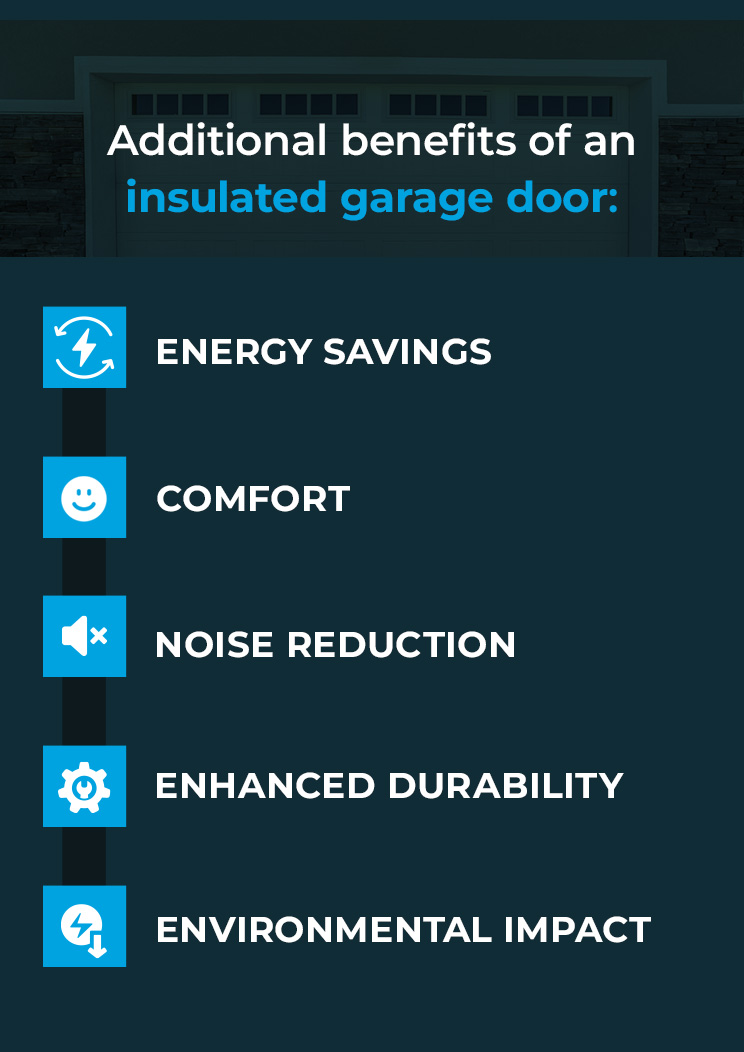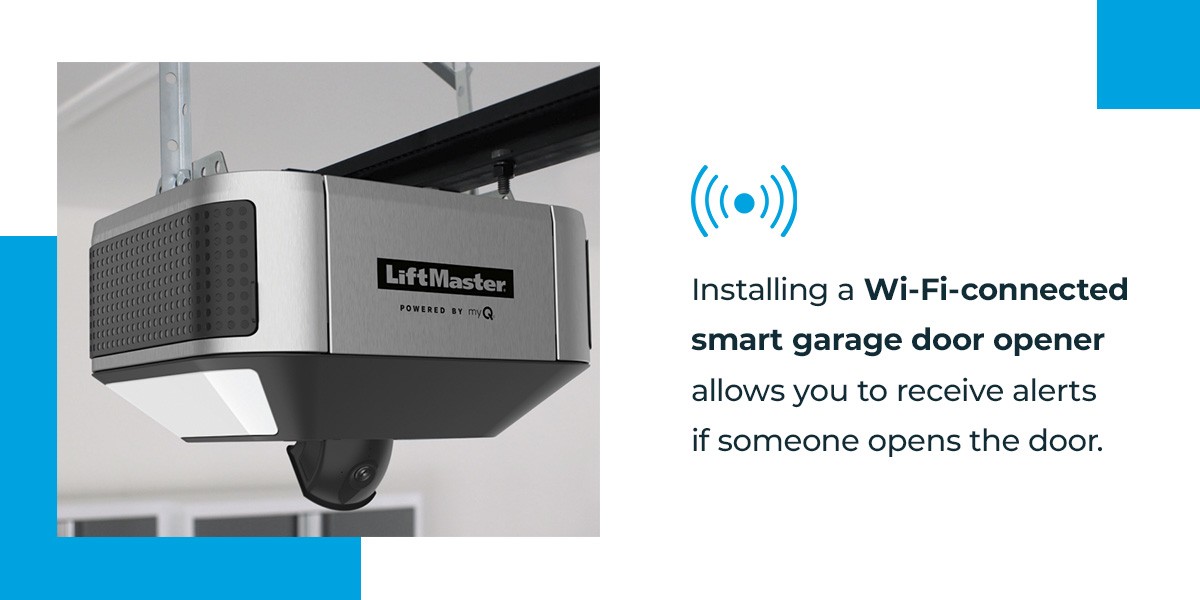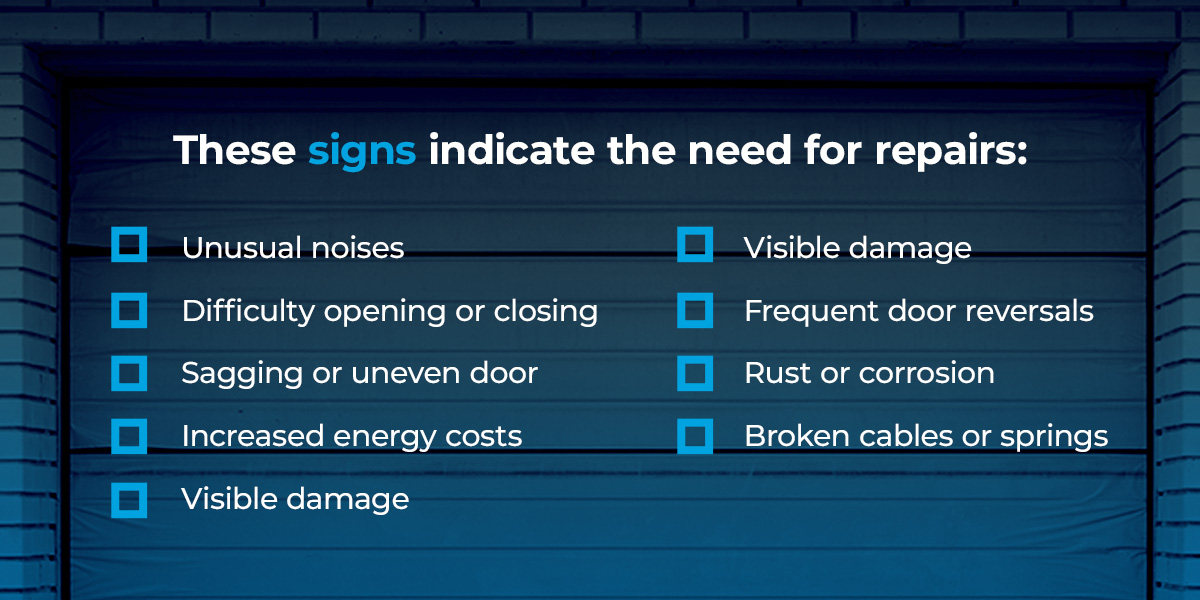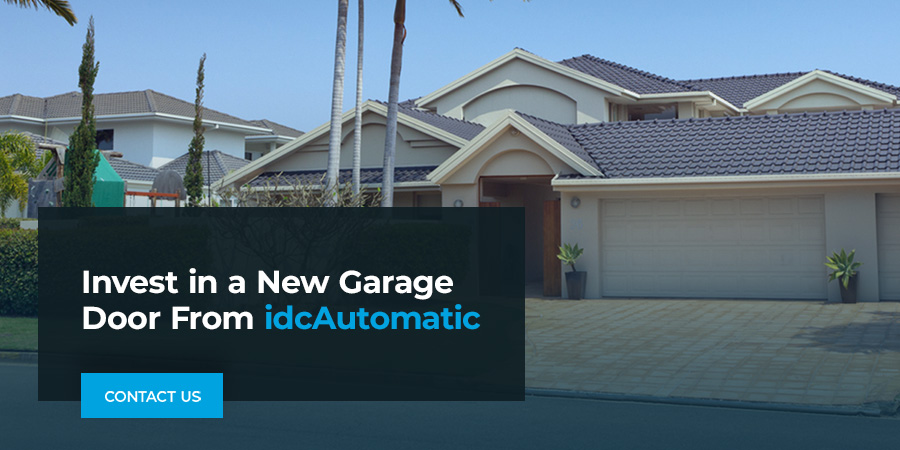Buying a New Garage Door Guide
A garage door is more than a cover for your garage. It’s an opportunity to complement your existing architecture and create a seamless appearance. Your garage door is a big part of your home’s curb appeal that should stand up to the elements and keep your garage and its contents safe. It’s one of the best investments you can make.
Buying a garage door involves selecting a door that suits your style, security needs and budget. You also want something durable that doesn’t require constant maintenance with your busy schedule. Our guide to buying a new garage door will help you make a more informed decision.
How to Choose a Garage Door Wisely
Here are a few smart garage door considerations to keep in mind:
- Quality: High-quality garage doors can last up to 15 years. Some construction materials are strong and low maintenance while others offer classic beauty but require more upkeep. Check for features that enhance energy efficiency and soundproofing if they are a priority. Look for warranties that cover both parts and labor and be sure your sales representative provides you with detailed warranty information.
- Durability: Given the cold, harsh winters we experience, it’s important to find a garage door that can withstand the coldest months of the year and continue performing over the long term. Look for weather seals and rust-resistant materials. If considering a steel door, check the gauge — or thickness — of the steel. A lower gauge number indicates thicker and more durable steel.
- Attractiveness: A residential garage door in Minneapolis is a huge part of your home’s curb appeal. They come in various styles, so choose a design that complements your home’s exterior. Select colors and finishes to match your door with your house’s color scheme. Some doors come with decorative windows that can add visual interest and allow natural light into the garage.
- Manufacturer and dealer reputation: Before making a purchase, research the reputation of both your provider and the garage door manufacturer. Check customer reviews or ask for recommendations from friends, family or neighbors who have recently purchased garage doors. A reputable dealer should provide clear information, assist with professional installation and offer support for any issues that arise post-purchase.
Garage Door Types and Materials
When selecting a garage door, understanding the various types and materials available will help you choose what you need. Each option has its own features, advantages and aesthetic appeal.
The different types of garage doors include:
- Sectional: Made of horizontal panels connected by hinges, these doors lift vertically and stack against the ceiling when open. They are a popular choice for many homeowners due to their ease of use and versatility.
- Roll-up: Composed of narrow slats that roll around a drum, roll-up doors are suitable for small spaces with limited headroom. They’re often found in commercial settings but have become increasingly popular in residential garages.
- Swing-out: Also known as hinged or barn doors, these classic doors consist of two panels that swing open from the center. They’re often made of wood and add a traditional charm to homes. They require adequate space to swing open.
- Tilt-up: A single solid panel tilts up to open, either as a canopy that hangs partially outside or a retractable door that’s fully inside. It requires more headroom than other types. It is not often used in snowy climates like Minnesota.
- Slide-to-the-side: This door opens horizontally and requires space on one or both sides of the garage for tracks to be installed.
- Bi-fold: These doors consist of two panels that fold back like a closet door.
These materials are generally available for garage doors:
- Steel is known for its durability, low maintenance and security. Look for at least 24-gauge steel to have a strong door. Steel can also be insulated for energy efficiency purposes.
- Wood offers a classic and elegant appearance. It’s available in various styles and customizable options but requires regular upkeep to prevent warping or cracking.
- Aluminum is lightweight, rust-resistant and available in modern designs. This material is ideal for coastal areas.
- Wood composite combines the aesthetics of wood with the durability of synthetic materials.
- Vinyl is a budget-friendly option that’s low maintenance and resistant to dents and rust.
Energy Efficiency and Insulation
There are many good reasons to insulate your garage door. An insulated garage door can provide protection for your vehicles and other assets. It also comes with these additional benefits:
- Energy savings: Insulated garage doors can reduce energy costs by keeping the garage temperature stable and lessening the burden on your home’s heating and cooling systems.
- Comfort: Insulated doors help maintain a comfortable temperature in the garage, especially when you use the space as a workshop or for recreational activities.
- Noise reduction: Insulation dampens sound, making the garage quieter during door operation and reducing the transmission of noise to living areas.
- Enhanced durability: These doors are typically constructed with multiple layers, which improves their overall strength and durability.
- Environmental impact: Since insulated garage doors reduce energy consumption, they contribute to lower carbon emissions.
The R-value measures a material’s insulating effectiveness. The higher the R-value, the better the insulation. For garage doors, this value indicates how well the door resists heat flow and will depend on the insulation material used. Two common insulation materials include:
- Polystyrene: This material is a cost-effective option that provides decent thermal insulation. It’s often included in various door models and is suitable for regions with moderate temperature fluctuations.
- Polyurethane: This premium insulation option is excellent for extreme weather conditions, especially for attached garages. With higher R-values than polystyrene, it keeps the garage cooler in summer and warmer in winter.
These benefits make an insulated garage door worth the investment.
Security Features
Many homeowners forget about security when choosing a garage door. What you put in your garage is valuable, and those items deserve proper protection. You can keep your vehicles and other assets safe when you choose a quality door or carriage-style garage doors that provide enhanced security.
While most garage doors come with basic locking mechanisms, these may not be sufficient to deter determined intruders. Here are some strategies to implement that will enhance your garage door security:
- Upgrade to a smart garage door opener: Installing a Wi-Fi-connected smart garage door opener allows you to receive alerts if someone opens the door.
- Add additional locks: Consider installing an electric auto lock. Be careful when installing locking handles or a single-sided deadbolt on the inside of the garage door if you have an operator attached, this can cause damage if the operator is engaged. A sliding bar lock is also a cost-effective option.
- Reinforce doors and hardware: Invest in heavy-duty steel, aluminum or composite doors that are challenging to breach. Look for doors with reinforced hardware for added security.
- Install a built-in alarm system: A built-in alarm can detect tampering with the garage door and alert you via your smartphone.
- Use motion-sensing lights and alarms: To deter potential intruders, install motion-sensing lights outside the garage and an alarm system.
- Cover windows: Opt for tinted or frosted glass for windows to obscure visibility into the garage.
Construction of Garage Door Sections
Garage doors are built using a range of construction methods, offering increasing levels of protection, security and durability.
- Single-layer garage door: Made from a single layer of steel with no insulation included, single-layer garage doors offer basic protection and security. Lightweight and cost-effective, these doors are suitable for detached garages or budget-friendly options. They’re ideal for homeowners looking for a simple solution without needing advanced insulation or security features.
- Double-layer garage door: This construction type is ideal for those seeking a balance between cost and enhanced insulation. Double-layer garage doors are composed of an outer layer of steel bonded to a layer of expanded polystyrene board insulation along with a protective vinyl backing. They offer better insulation and soundproofing compared to single-layer doors with greater structural integrity for quieter operation.
- Triple-layer garage door: Often referred to as a sandwich door, this type consists of two layers of steel with either expanded polystyrene or polyurethane insulation sandwiched in between. This configuration maximizes the R-value, providing superior insulation and energy efficiency. Triple-layer doors are designed for maximum protection against weather and intruders, making them ideal for attached garages or those used as living spaces.
- Overlay construction garage door: This is a triple-layer door with additional overlay materials such as wood, wood composite or PVC for aesthetic appeal. It retains the benefits of triple-layer construction while providing customizable design options through the overlay elements, making it ideal for homeowners looking for a beautiful, customized appearance.
Maintenance and Care
All garage doors contain components that require regular maintenance to ensure maximum safety and performance. Steel doors require significantly less maintenance than all wood doors, but many homeowners are attracted to the natural beauty of wood garage doors. As a natural product, wood requires proper finishing and regular re-applications.
These signs indicate the need for repairs:
- Unusual noises
- Difficulty opening or closing
- Sagging or uneven door
- Increased energy costs
- Visible damage
- Frequent door reversals
- Rust or corrosion
- Broken cables or broken springs
Regularly check your door’s hardware, including hinges, rollers and tracks for signs of wear or damage. You can apply a silicone-based lubricant to the moving parts to reduce friction and noise. Avoid using grease as it can attract dirt and grime.
A wooden garage door will last for years if properly cared for. If steel doors are painted, they too will require re-application of rust-inhibiting primer and paint over time. Door maintenance is an important consideration but shouldn’t require a trade off with the beauty of the door. An annual garage door tuneup ensures you have a door that’s working optimally for as long as possible.
Invest in a New Garage Door From idcAutomatic
A reliable, residential garage door is vital to the seamless function of your home. When you’re looking to upgrade your residential garage door in MN, look no further than idcAutomatic. We have the experience and knowledge needed to guide you through the garage door selection and installation process.
We’re proud of our deep roots in providing residential garage doors in Blaine, Minnetonka, Coon Rapids and other areas around the Twin Cities. We’re also proud of our partnerships with high-quality manufacturers like LiftMaster®, Clopay® and others.
Backed by our reputation and quality staff, we stand behind every door we build. Contact us today about your garage door needs.





